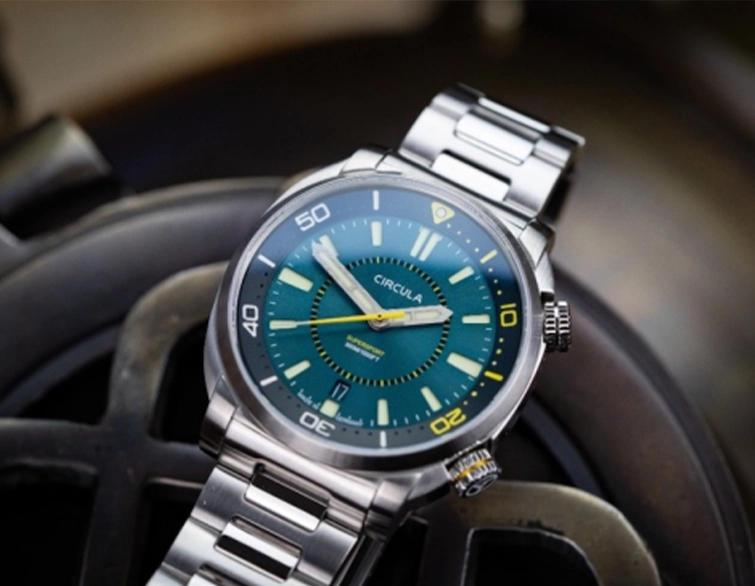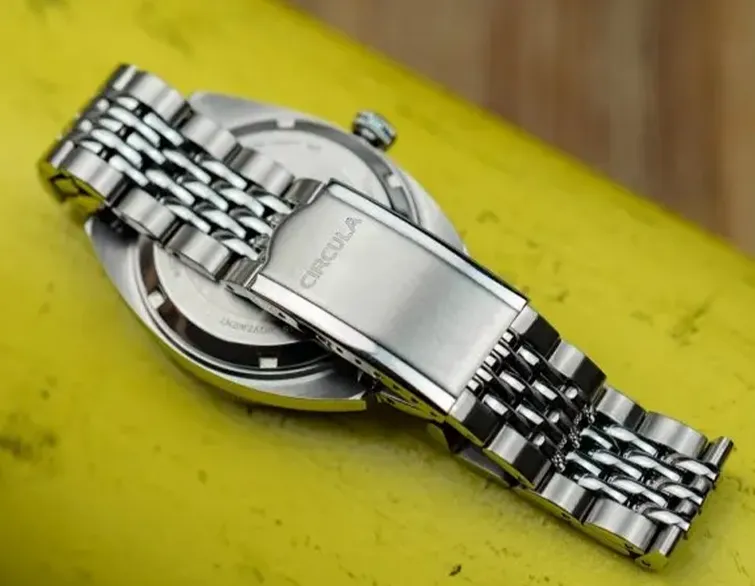28.08.2024
Uhrengehäuse aus 316L Edelstahl
Eine sichere Sache!
316L Edelstahl ist sehr robust und deshalb ein beliebtes Material für Uhrengehäuse. Die Vorteile haben auch uns überzeugt, weshalb wir für die Gehäuse all unserer CiRCULA-Uhren diesen Edelstahl nutzen, der auch als “Chirurgenstahl” bekannt ist. In diesem Artikel werden wir uns den Edelstahl und seine Verwendung bei Uhren genauer anschauen.
Was ist 316L Edelstahl?
316L Edelstahl ist eine korrosionsresistente, auf Eisen basierende Legierung. Neben Eisen enthält Chirurgenstahl im Wesentlichen:
- 16,5 bis 18,5 % Chrom
- 10 bis 13 % Nickel und
- 2 bis 2,5 % Molybdän
In 316L Edelstahl sind außerdem noch geringe Anteile von anderen Elementen enthalten, z.B. Phosphor (0,045 %), Schwefel (0,015 %) und Stickstoff (0,11 %). Durch das Chrom wird der Stahl besonders korrosionsbeständig („Stainless Steel“), Nickel erhöht die Widerstandsfähigkeit gegen Säuren und durch die kleine Menge des Legierungselements Molybdän wird die Festigkeit, Korrosions- und Hitzebeständigkeit noch weiter gesteigert.
316L Edelstahl für Uhren ideal!
Diese spezielle chemische Zusammensetzung der 316L Edelstahllegierung macht das Material robust und korrosionsbeständig. Insbesondere bei Uhren, die viel getragen werden und z. B. mit Salz- oder Chlorwasser in Kontakt kommen können, ist das von Vorteil. 316L Edelstahl übersteht den Kontakt unbeschadet und bei entsprechender Wasserdichte können Uhren wie die CiRCULA AquaSport II oder SuperSport mit einem Gehäuse aus Chirurgenstahl auch beim Schwimmen und Tauchen im Schwimmbad oder Meer getragen werden.
Weitere Vorteile von 316L Edelstahl bei Uhren
- Blanke, glänzende Oberfläche (Titan beispielsweise wirkt im Vergleich deutlich gräulicher und matter)
- 316L Edelstahl ist farbecht. Sollte der Edelstahl verfärbt aussehen, dann handelt es sich um Schmutz, der mit einem trockenen Tuch entfernt werden kann.
- Der Edelstahl lässt sich leicht beschichten, sodass die Uhrengehäuse nicht immer silberfarben sein müssen. Einige unserer Circula-Uhren haben wir im PVD-Verfahren mit Rotgold beschichtet.
316L Edelstahl und Nickel
Im Gegensatz zu anderen Edelstahlen ist Chirurgenstahl antiallergen und damit auch für Allergiker geeignet. Das ist, neben der Robustheit, ein weiterer Grund, weshalb wir bei den Gehäusen und Stahlbändern unserer CiRCULA-Uhren auf 316L Edelstahl setzen. Chirurgenstahl enthält zwar eine geringe Menge an Nickel, allerdings darf gemäß der Richtlinie 2014/84/EU der Kommission https://eur-lex.europa.eu/legal-content/DE/TXT/?uri=OJ:JOL_2014_192_R_0009 in Bezug auf Nickel bei körpernaher Verwendung des Edelstahls nur eine verschwindend geringe Menge Nickel pro Woche an die Haut abgeben werden. Ob diese Menge eingehalten wird, lässt sich mit speziellen Nickeltests aus der Apotheke testen.
Wir haben unseren Uhren auch diesem Test unterzogen und sämtliche Modelle haben diesen natürlich bestanden.


